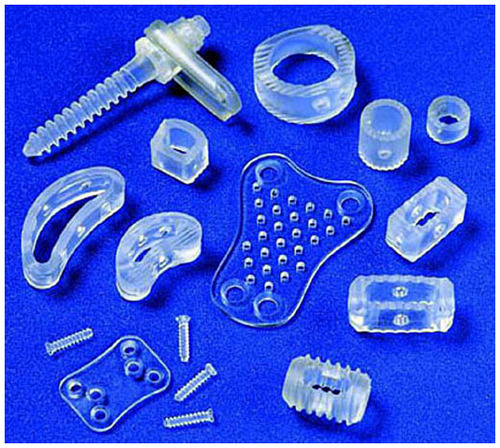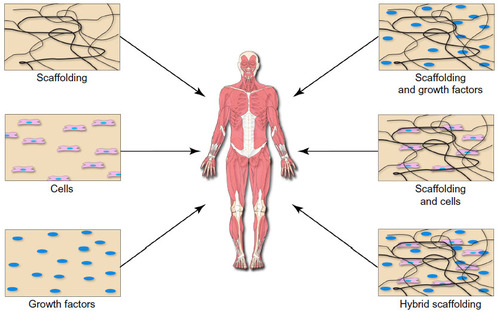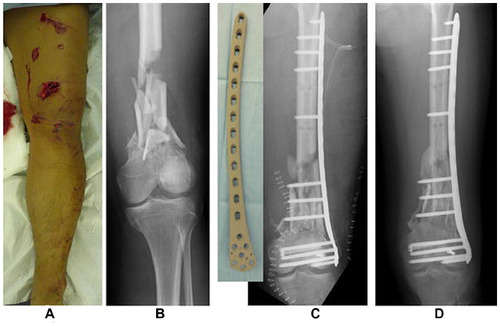Figures & data
Figure 1 A variety of bioabsorbable implants for use in spine applications.

Figure 2 Tissue engineering and regenerative medicine rely on the implementation of various cell-, biomolecule-, and scaffold-based approaches to restore structure and function to developing and/or damaged tissues.

Figure 3 Characteristics of vancomycin-loaded chitosan coating.
Abbreviations: EPD, electrophoretic deposition; PBS, phosphate-buffered saline.

Figure 4 Scanning electron microscope images of a bioactive glass coating at different time-points.
Abbreviations: Acc, accelerating; BAG, bioactive glass; BSE, backscatter electrons; Det, detector; EDS, energy-dispersive X-ray spectroscopy; Magn, magnification; WD, working distance.

Figure 5 Case of a 42 year-old patient who was treated with an iodine-coated internal fixation plate.

